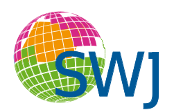Special Issue on Bridging Machine Learning and Knowledge Representation
Call for papers: Special Issue on
Bridging Machine Learning and Knowledge Representation
The Semantic Web is a key framework for structuring, integrating, and reasoning over knowledge. Knowledge Representation and Reasoning (KRR) enables intelligent systems through semantic interoperability, automated inference, and knowledge-driven decisionmaking. Traditional symbolic reasoning struggles with large-scale, unstructured data, leading to the rise of Neuro-Symbolic AI, which integrates ontologies, logic-based reasoning, and knowledge graphs with deep learning models for improved scalability, adaptability, and interpretability. Deep Learning, particularly Transformers, Graph Neural Networks (GNNs), and Large Language Models (LLMs), enhances Semantic Web applications by enabling:
- Knowledge Graph Completion via embeddings and GNNs.
- Explainable AI (XAI) through semantic constraints.
- Automated Knowledge Extraction using pre-trained LLMs.
- Hybrid Reasoning combining deep learning and symbolic logic.
Building upon this, this Special Issue will feature extended versions of selected best papers from KES 2025 (29th International Conference on Knowledge-Based and Intelligent Information & Engineering Systems), along with original articles from open submissions. All submissions—whether extended conference papers or new contributions—will undergo rigorous peer review with three reviewers per article. The special issue will focus on cutting-edge advancements in ontology-based reasoning, knowledge graphs, explainability in AI, scalable linked data solutions, and trustworthy Semantic Web applications. Contributions will highlight innovations in logic-based reasoning, hybrid AI models, and neuro-symbolic approaches, demonstrating how Deep Learning can enhance Semantic Web frameworks for more robust, interpretable, and generalizable AI
systems. Additionally, open submission articles will showcase real-world applications of Semantic Web and Deep Learning integration in high-impact domains such as healthcare, finance, smart cities, and autonomous systems, where scalability, reasoning efficiency, and explainability are key challenges. Through these contributions, we aim to bridge the gap between semantic knowledge representation and modern AI techniques, fostering the next generation of intelligent and interpretable AI solutions.
The KES 2025 conference provides a broad and dynamic platform for discussing the latest advancements in Artificial Intelligence (AI), Knowledge-Based Systems, and Semantic Web technologies. Its general tracks cover a wide spectrum of topics, ranging from Machine Learning and Deep Learning (G1) to Knowledge-Based and Expert Systems (G2), Intelligent Information Systems (G3), and Industry Applications (G4). This diversity highlights KES’s commitment to interdisciplinary research and its role in bridging the gap between symbolic reasoning and data-driven AI methods. A key trend at KES 2025 is the increasing focus on integrating Machine Learning with Knowledge Representation and Reasoning (KRR) through Semantic Web technologies. This convergence is driven by several factors:
- The Need for Explainable and Trustworthy AI: Many discussions at KES 2025 revolve
around the challenge of making AI systems interpretable and accountable. While deep
learning models excel in pattern recognition and predictive accuracy, they often act as
black boxes with limited explainability. Semantic Web technologies and ontologybased
reasoning provide structured, logical frameworks that can enhance AI
interpretability, ensuring that automated decisions can be traced and justified. This topic
is treated in the Machine Learning, AI, and Deep Learning Track (G1). - Scalability and Efficiency in Knowledge Graphs: The G1 Track explores how deep
learning models can scale knowledge graph reasoning to handle large-scale,
unstructured datasets. Topics such as knowledge discovery, federated learning, and
online learning are crucial for making Semantic Web applications more efficient,
scalable, and responsive to real-world demands. - Integration of Symbolic and Neural AI: The Knowledge-Based and Expert Systems
Track (G2) directly addresses hybrid AI models that combine machine learning with
reasoning strategies such as ontology reasoning, Bayesian networks, and nonmonotonic
reasoning. These approaches align perfectly with the current research interest in Neuro-
Symbolic AI, which seeks to integrate semantic reasoning into deep learning
architectures for better generalization, robustness, and adaptability. - Real-World Applications Across Multiple Domains: The Intelligent Information and
Engineering Systems Track (G3) and the Industry Applications Track (G4) showcase
practical applications of Semantic Web and AI integration in healthcare, cybersecurity,
robotics, finance, and smart cities. These sessions emphasize how semantic technologies
can enhance data-driven AI models in terms of context-awareness, explainability, and
decision support.
Given this broad visibility and interdisciplinary nature of KES 2025, the selected five to eight papers for this Special Issue—including both KES contributions and original open submissions—will focus on innovations at the intersection of Machine Learning, Semantic Web, and Knowledge Representation. Each submission will be evaluated through triple peer review, ensuring the highest scientific standards. This issue will serve as a key resource for researchers and practitioners seeking to bridge symbolic and data-driven AI for the development of more intelligent, scalable, and explainable systems.
Submission Guidelines
Submission deadline: December 31, 2025.
Author Guidelines
Submissions should be made through the Semantic Web Journal website at http://www.semantic-web-journal.net.
Authors must take notice of the submission guidelines posted at http://www.semantic-web-journal.net/authors.
This special issue will follow the open and transparent review process of the Semantic Web Journal, with at least three reviews per paper.
Only significantly extended versions of the best KES 2025 papers (with at least 40% new content) will be considered for inclusion.
Guest Editors:
- Prof. Cecilia Zanni-Merk, INSA Rouen Normandie and LITIS Laboratory.
- Assoc. Prof.. Ahmed Samet, INSA Strasbourg and ICube Laboratory.
- Eva Blomqvist's blog
- Log in or register to post comments
- 4991 reads
